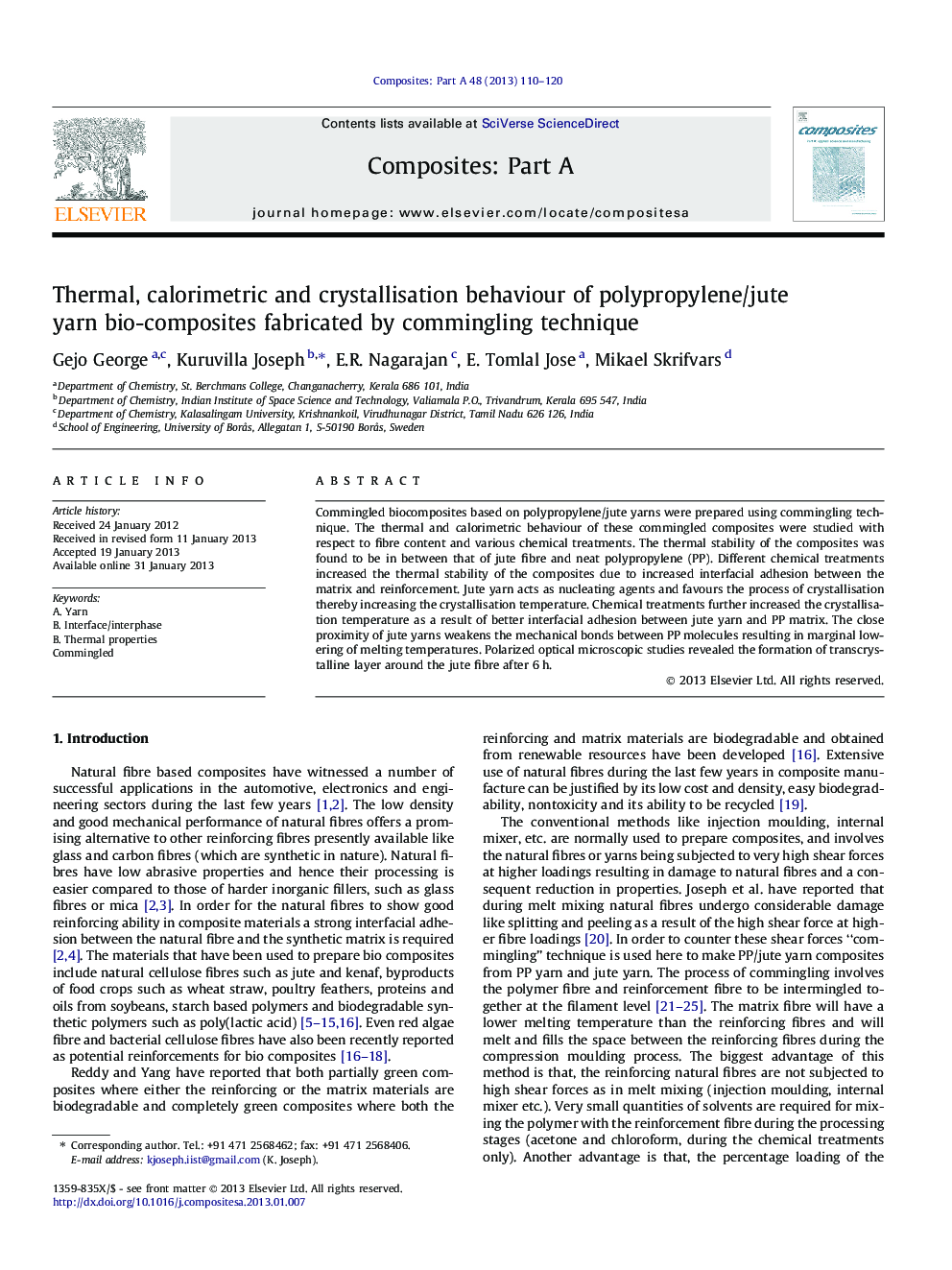| Article ID | Journal | Published Year | Pages | File Type |
|---|---|---|---|---|
| 7892805 | Composites Part A: Applied Science and Manufacturing | 2013 | 11 Pages |
Abstract
Commingled biocomposites based on polypropylene/jute yarns were prepared using commingling technique. The thermal and calorimetric behaviour of these commingled composites were studied with respect to fibre content and various chemical treatments. The thermal stability of the composites was found to be in between that of jute fibre and neat polypropylene (PP). Different chemical treatments increased the thermal stability of the composites due to increased interfacial adhesion between the matrix and reinforcement. Jute yarn acts as nucleating agents and favours the process of crystallisation thereby increasing the crystallisation temperature. Chemical treatments further increased the crystallisation temperature as a result of better interfacial adhesion between jute yarn and PP matrix. The close proximity of jute yarns weakens the mechanical bonds between PP molecules resulting in marginal lowering of melting temperatures. Polarized optical microscopic studies revealed the formation of transcrystalline layer around the jute fibre after 6Â h.
Related Topics
Physical Sciences and Engineering
Materials Science
Ceramics and Composites
Authors
Gejo George, Kuruvilla Joseph, E.R. Nagarajan, E. Tomlal Jose, Mikael Skrifvars,
